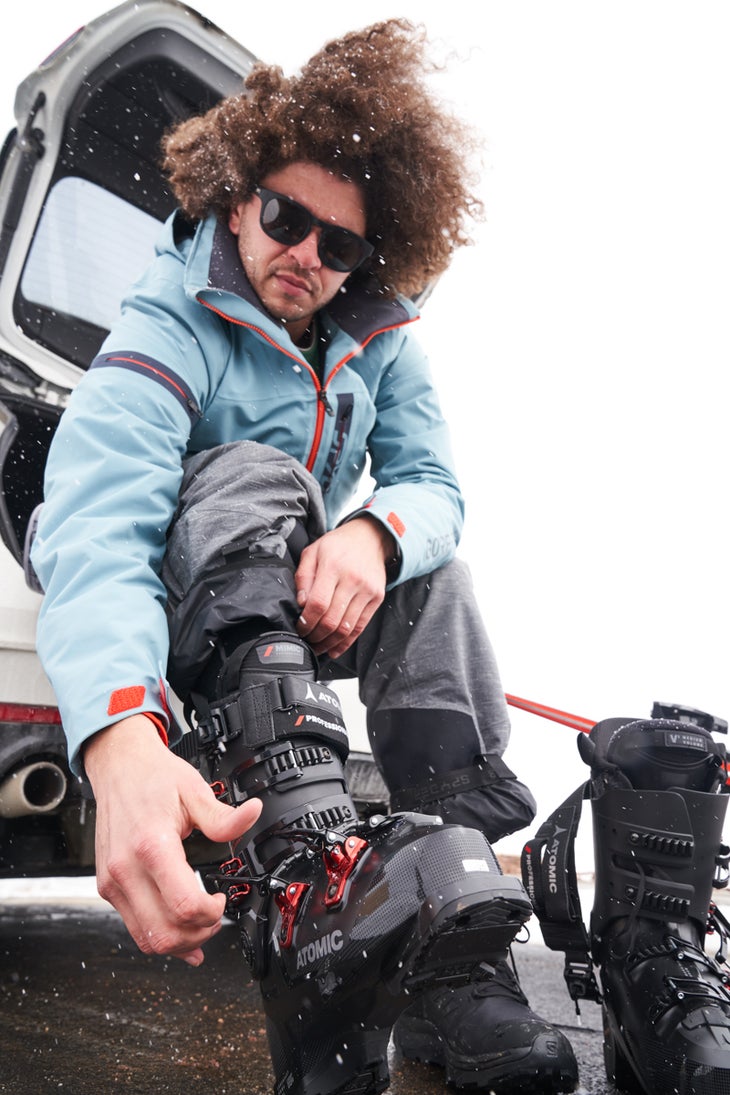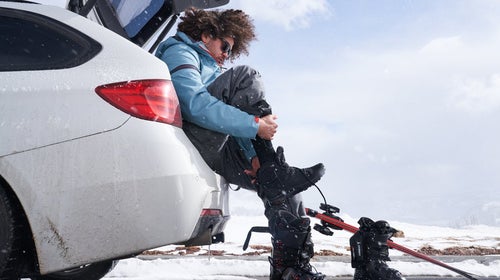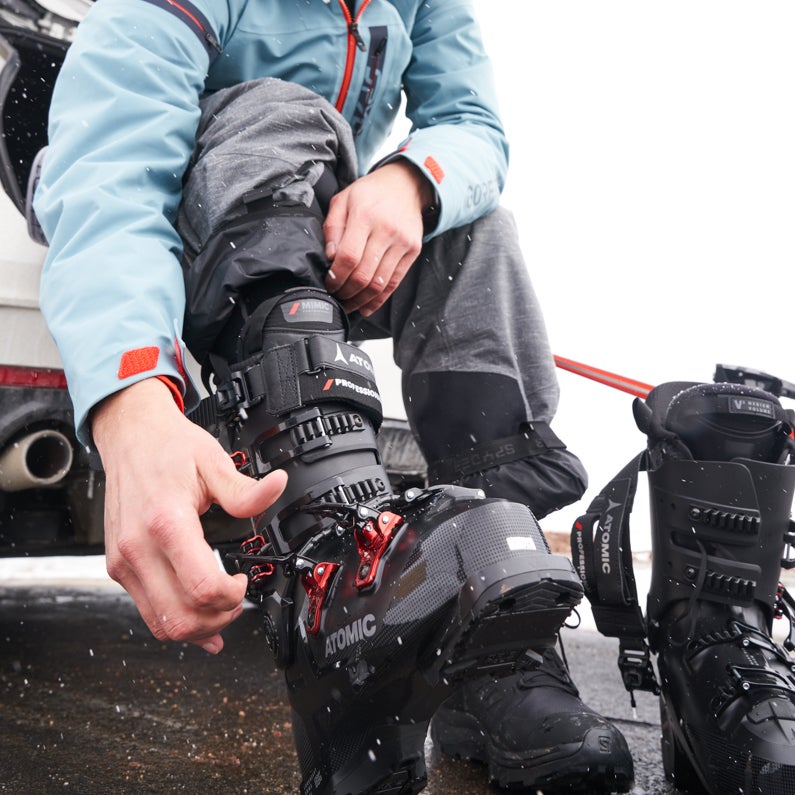You went to a , you chatted with them about your skiing goals, and you got your foot measured to find the right shell size. You did everything right and wound up purchasing the best possible boot for your foot shape and skiing ability. Congratulations! Your boot journey has really just begun.
Chances are, even the best possible boot for your foot still won’t fit perfectly right out of the box. It will take some breaking in, but it may take even more than that. If the shoe just doesn’t quite fit, here are a few after-market modifications to get the most out of your new boots.
Custom Footbeds
This is the most important modification you can make to your boots. Whether you buy a custom or trim-to-fit insole, what matters is that you throw out the stock footbeds that come with new ski boots. Manufacturers put zero dollars into these stock footbeds because they assume you’ll replace them.
All of your control and stability in a ski boot comes from the subtalar joint in the heel that supports your foot and controls pronation—so it’s not arch support that matters as much as heel support. Look for a tall and neutral heel pocket in your insoles, not a flat heel with a high arch.
For custom footbeds, I prefer unweighted vacuum-process footbeds like to weighted ones like —not because the latter is bad, but because the former is basically idiot-proof. A good bootfitter can make great weighted footbeds, but it’s much more difficult to get right.
Heat Molding
“Heat molding” a ski boot liner is a misnomer. Heat doesn’t mold a boot to your foot; it allows your foot to mold the liner. When we put a liner in the oven, all we are doing is making the foam more malleable and compressible. When you insert your feet into your boots, they compress the soft foam and expand the liner. Your liner will not vacuum in and make your boot tighter. At my boot shop, our advice is always this: ski your boots. If you find discomfort or numbness, come back in and we’ll bake them. But we don’t want to make extra room that you don’t need.
Shell Modifications
There are a number of ways to modify the plastic shell of your boot if you’ve sized down too aggressively, or if you have painful bunions or bone spurs. Just know that you can’t make the shell of your boot smaller unless you own a . It’s also worth noting that a quality footbed can often suffice instead of shell modifications.
Related:
If you need room in just one spot, grinding is the way to go. Grinding works best in thick, polyurethane boots and is both quick and iterative, so you can dial in your fit. If your boot is too stiff, a bootfitter can also flex-grind material away and soften it.
For larger width expansions or ankle bone and navicular issues (the sometimes-protruding bone in front of your inner ankle bone), the best fix is a boot punch, which is done by heating the boot and pressing out problem areas.
Liner Upgrades
If you ski more than 20-30 days a year, you might consider a liner upgrade after a few years. For alpine boots, it’s hard to do better than cork-injected liners. Zipfit makes a leather cork-injected liner in different volumes that lasts over 600 days on snow and can be continuously modified.
For touring boots where warmth and keeping weight down are priorities, I prefer Intuition liners. Depending on the model and thickness, they can last up to 150 days on snow. Intuitions often come quite dense and benefit from a heat mold more than stock liners.
t are great, as long as you have a quality footbed. The injection process locks you into place, so if you have a pronated footbed, that can exacerbate your issues. They can offer the best precision in the game, but once you start to pack them out after about 100 days, they’re done.

Buckle Adjustments
Most people overbuckle their boots. If your shell fits properly, your cuff buckles should be about two fingers tight (if you have to use your palm to close it, it’s too tight). Lower shell buckles should be barely one-finger-tight. These buckles are mostly used to keep the gasket closed and keep water out of your boots. Many skiers don’t know that you can move cuff buckles in and out, which can help people with skinny or muscular calves. For women, this can be a life saver as their calves are located lower on the tibia than men’s, are often larger, and can get squeezed.
Booster Straps
Chances are, you’ve seen Booster Straps on the boots of the race kids cutting you in the lift line.The patent on this product lapsed recently, so you will be seeing elastic cam power straps more often on top-shelf boots. But the Booster Strap is the original, and in my opinion, still the best. Booster Straps offer a more progressive flex and can stiffen a boot that’s become too soft. They are a boon for those who suffer from , as you can tighten them directly to your liner’s tongue (under the plastic cuff) and then loosen your buckles. They can also be worn over the plastic cuff to stiffen a boot and provide more instantaneous response.
Liner Modifications
Shell modifications are what most people think of when they hear the term “bootfitting,” but I spend far more time creating shims and wedges to modify the liners rather than the shells of ski boots.
Liners are made of soft material that compresses over time, so bootfitters will create dense foam shims that can take up further space inside a boot. If you start to feel your heel move, we can create banana-shaped shims that lock it back in place. Feel slop over your ankle bone? We’ll create a medial shim to fix that up.
One of the most important types of liner modification is the varus or valgus wedge. These are thin foam wedges that attach to your boot board under your liner and correct pronation and supination by rotating your foot in the shell. The former is much more common than the latter because it mitigates excessive pronation, which can cause pain to the inner ankle bone—and it’s much cheaper than a punch.
Jake Stern is �����ԹϺ���’s digital editor and a professional bootfitter based in Mammoth Lakes, California. , the shop where he fits, has been a leader in custom bootfitting for four decades.
More On Ski Boots
The Best Alpine Ski Boots of the Year
The Best Backcountry Boots of 2024
The Best New Bindings of the Year


